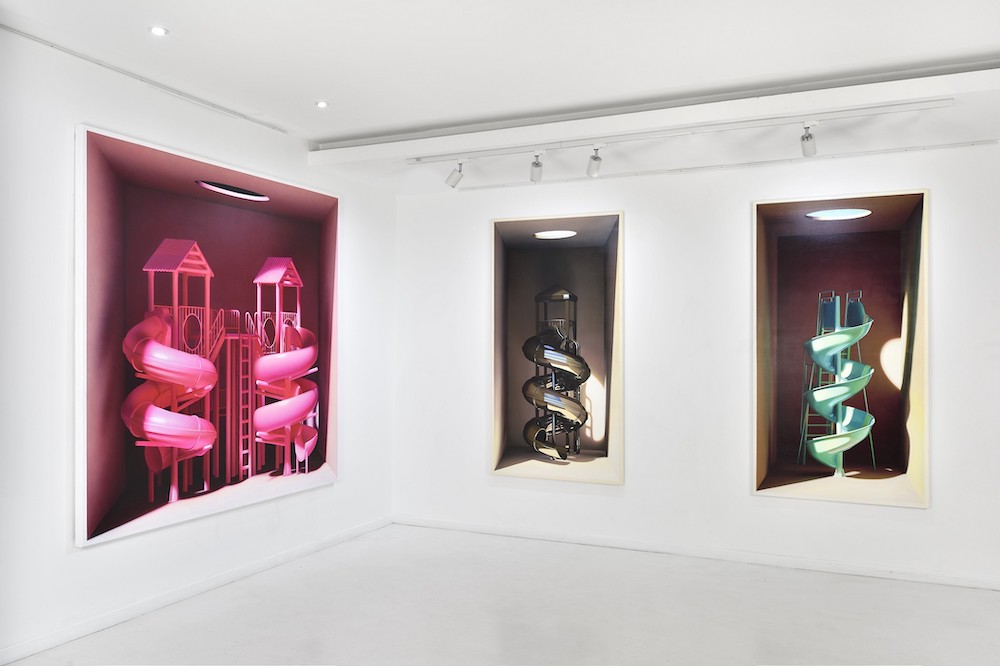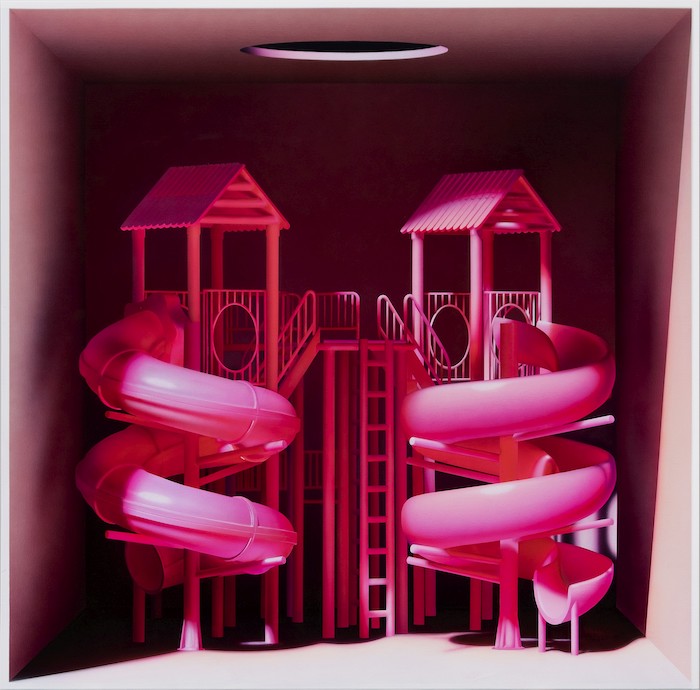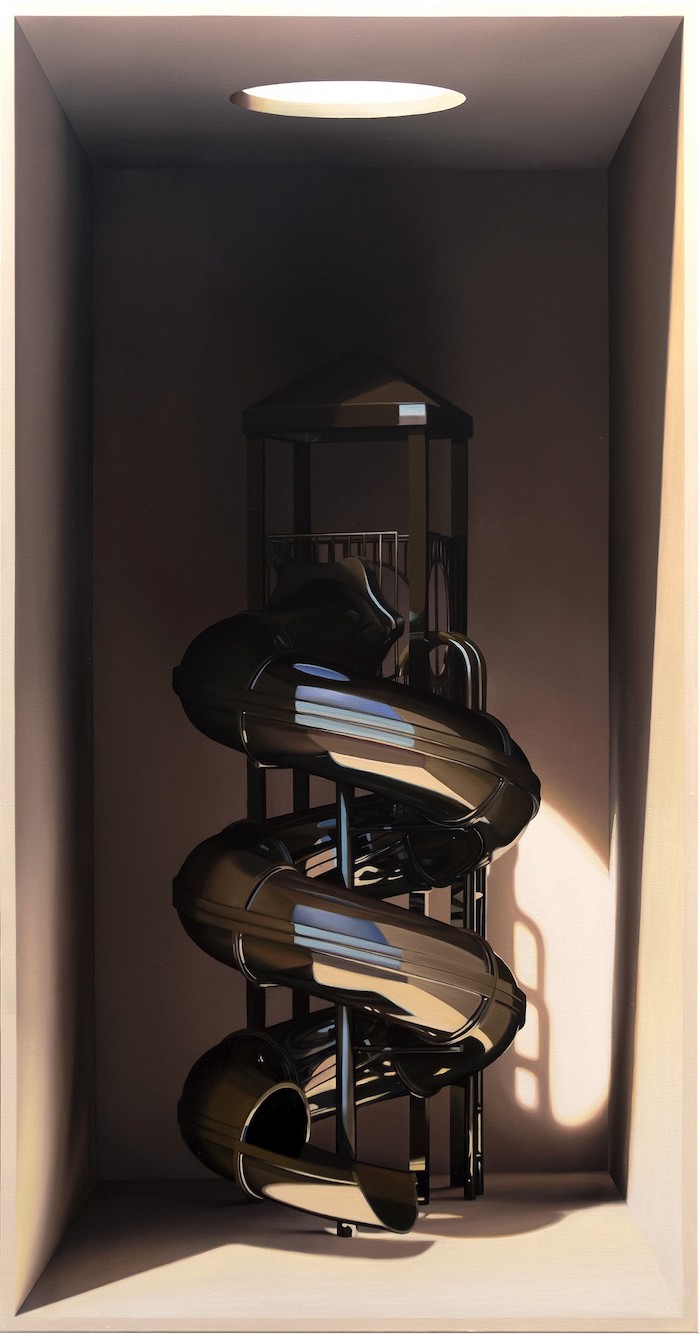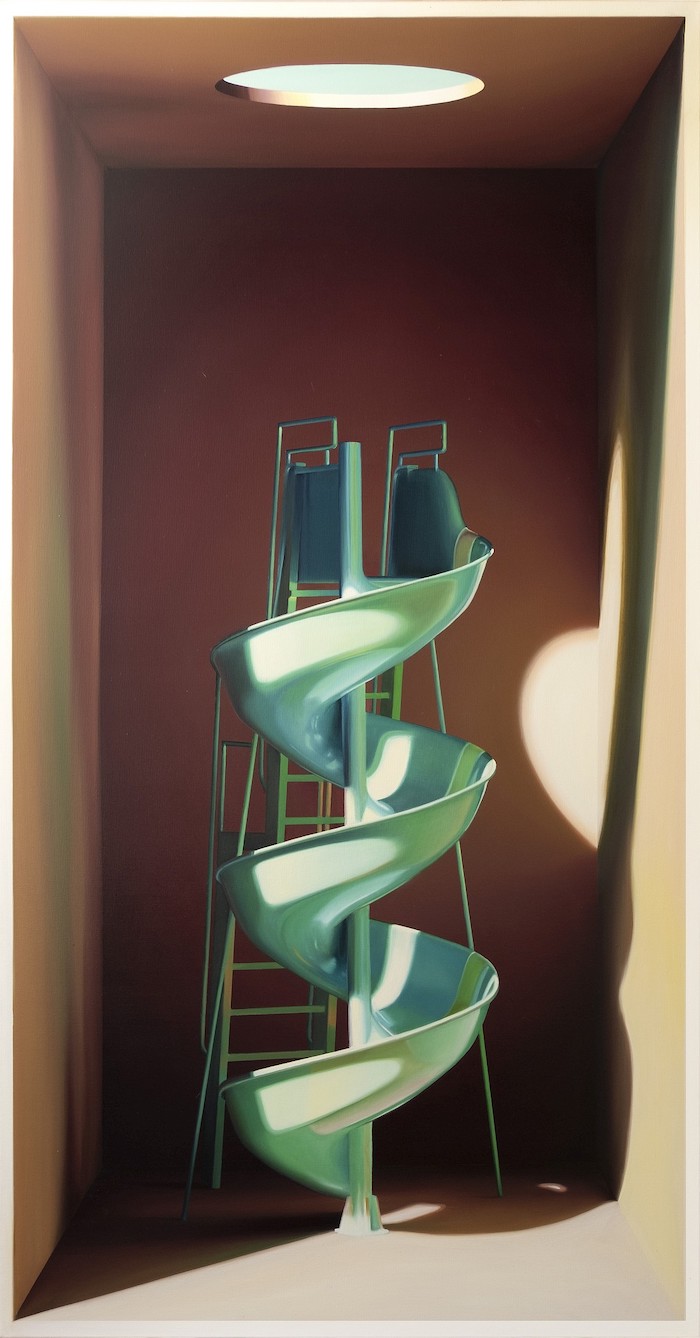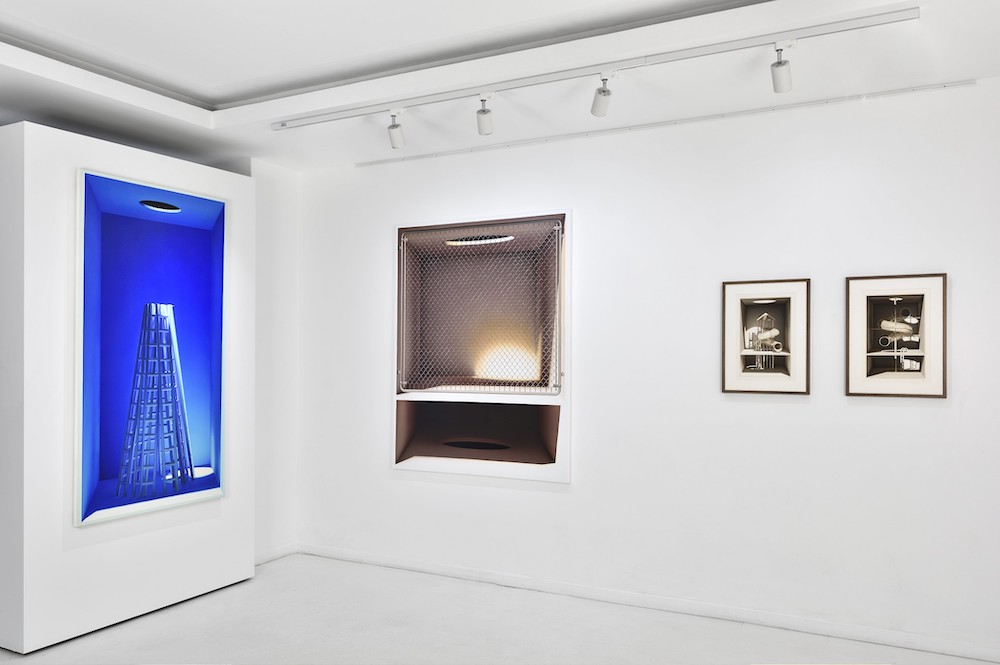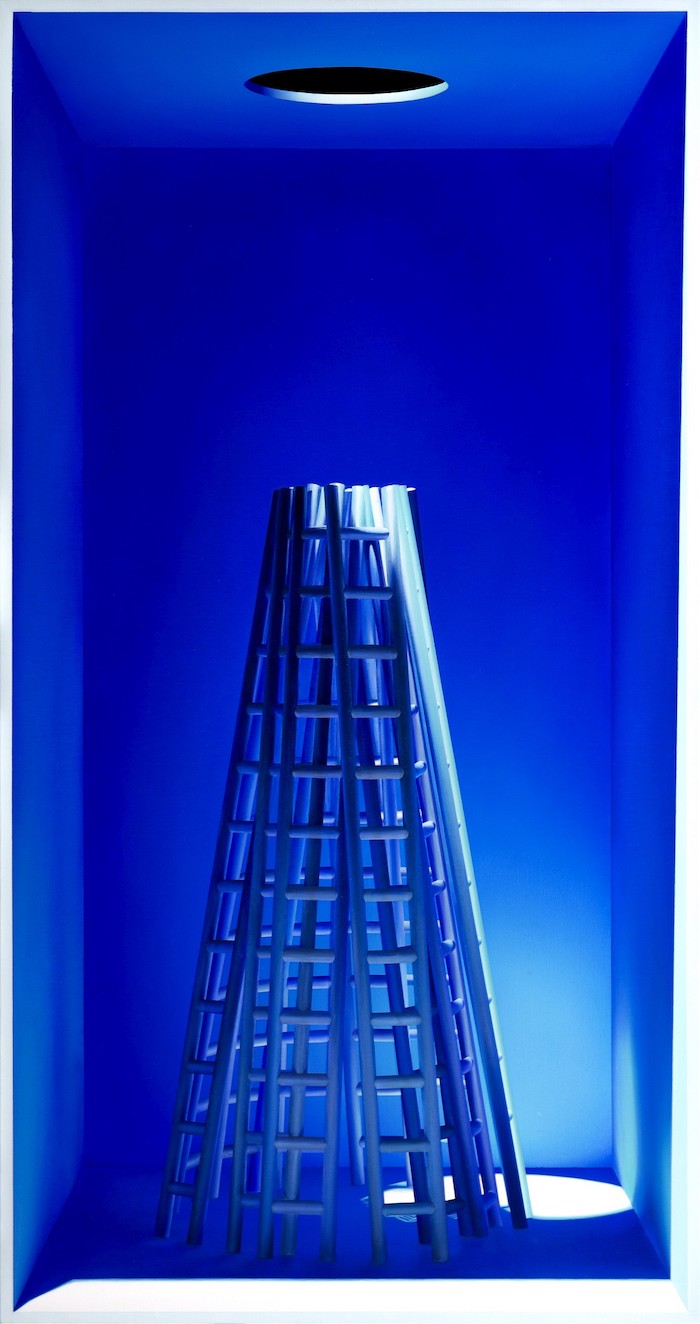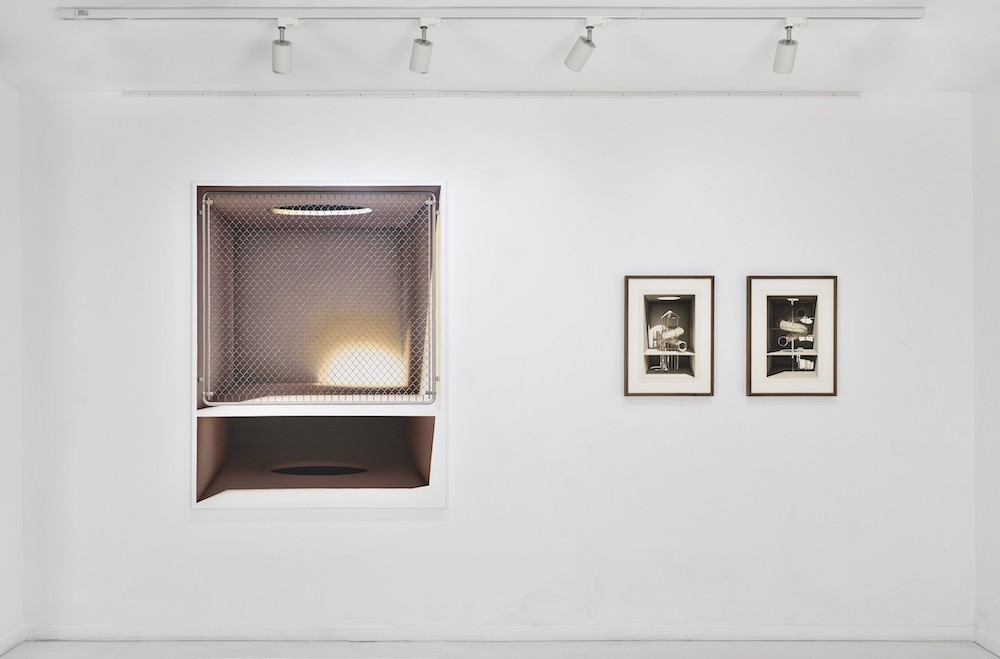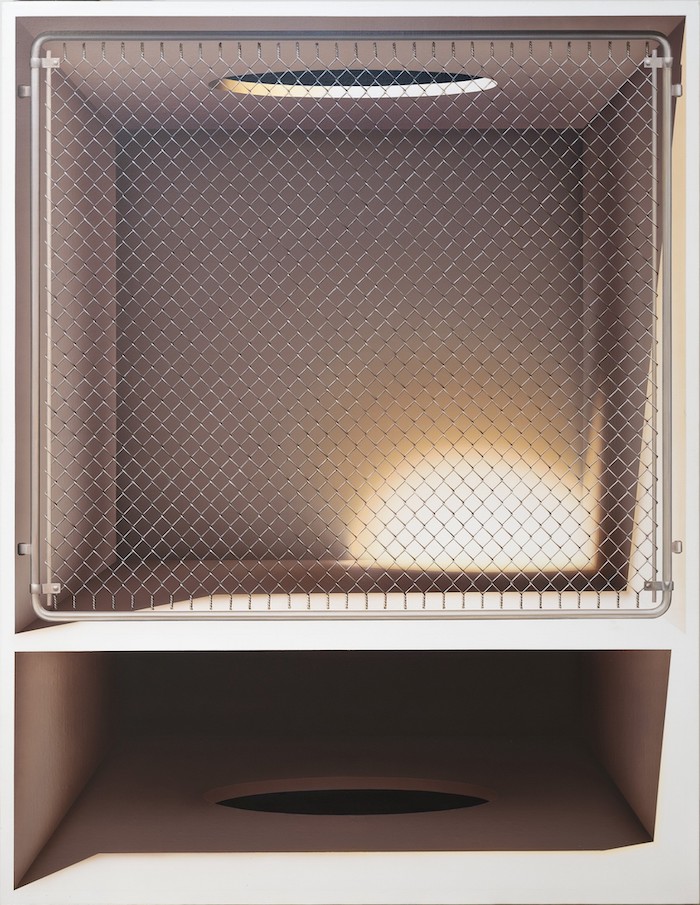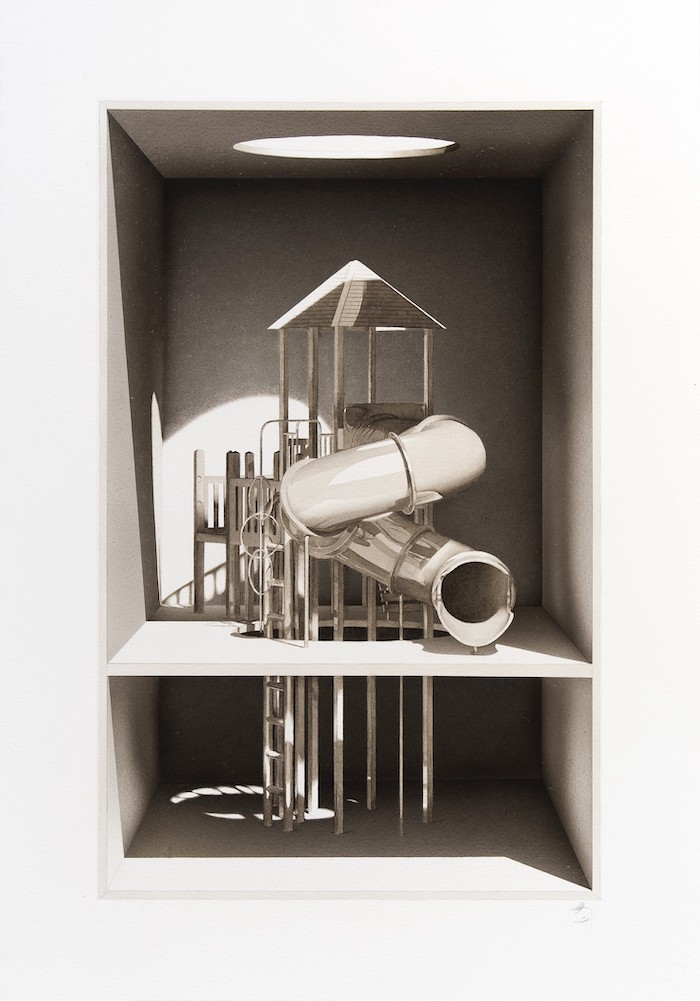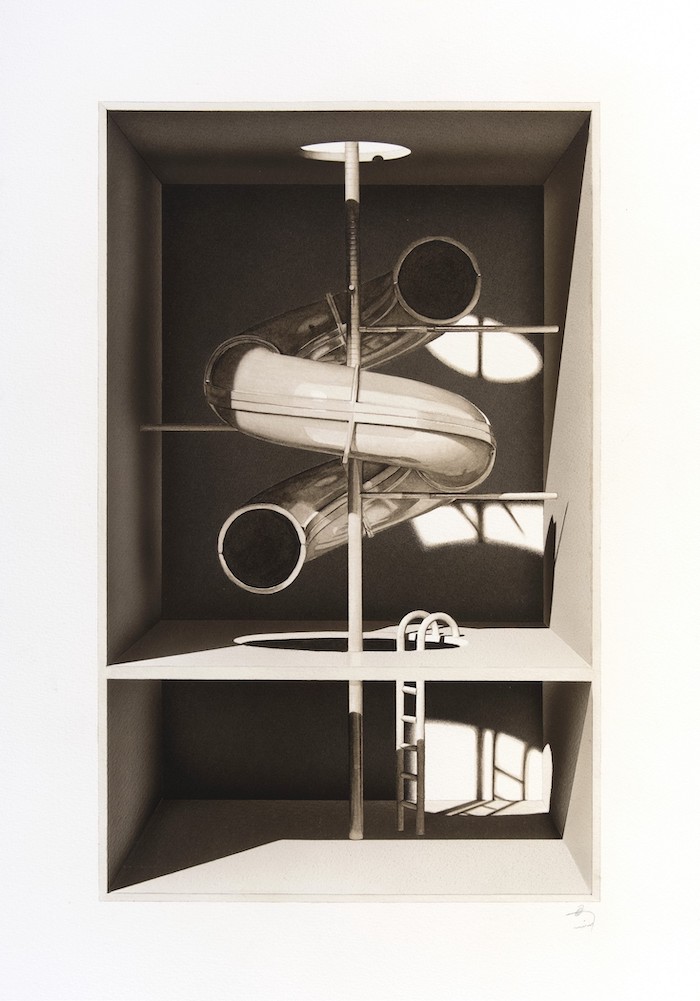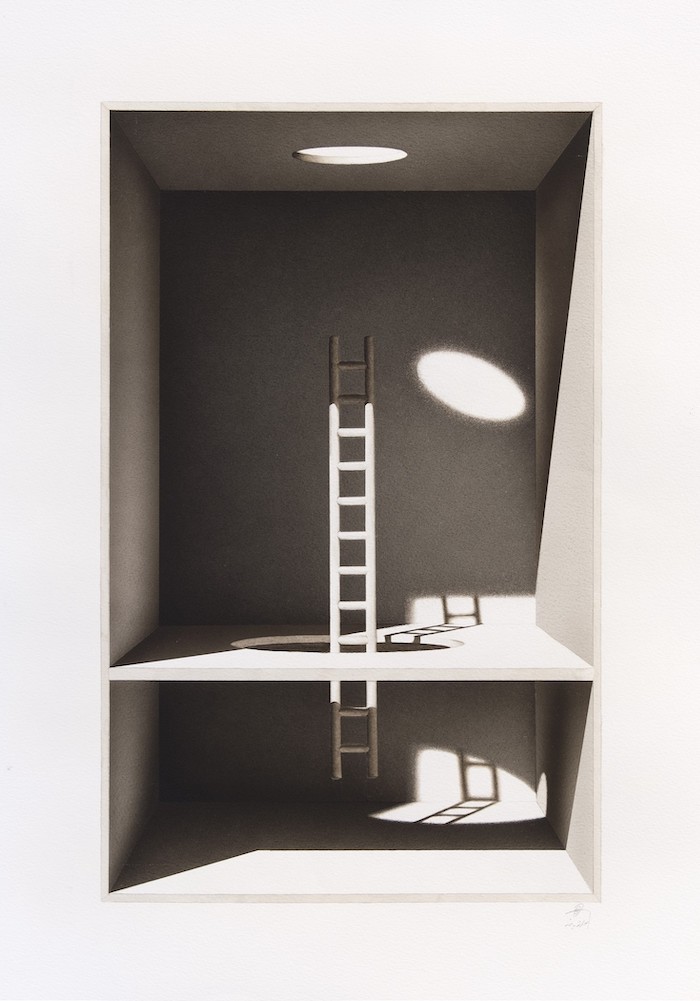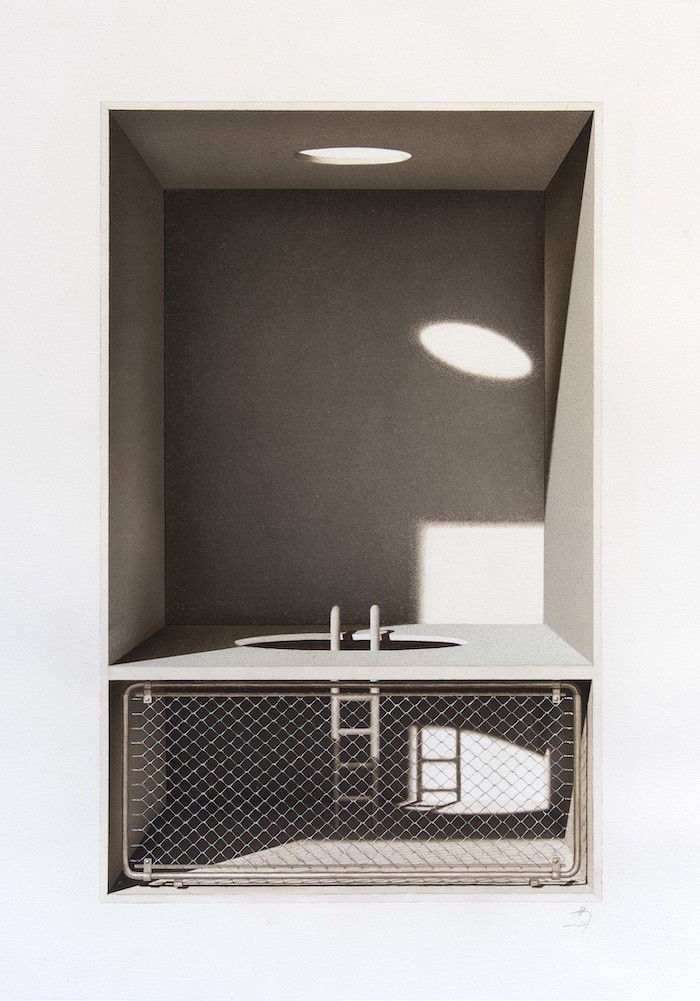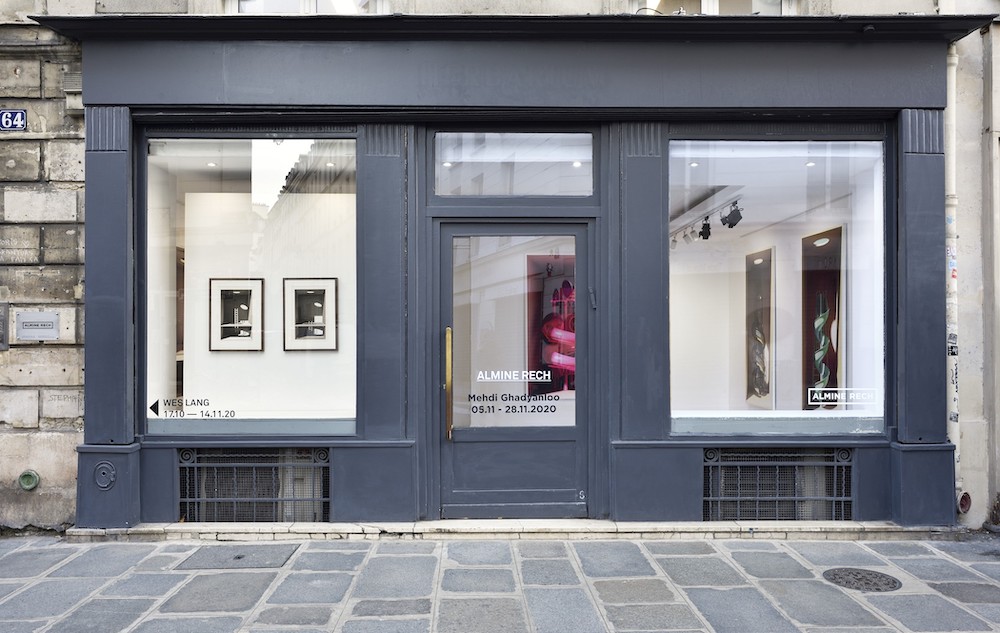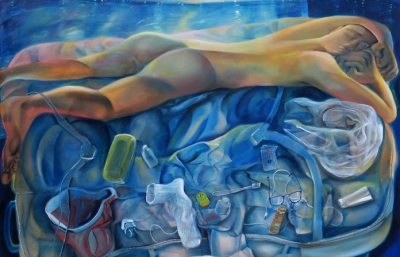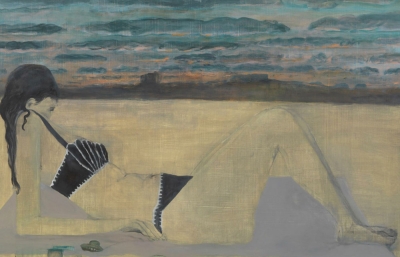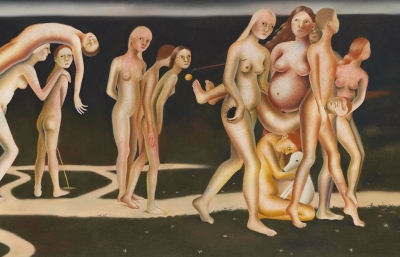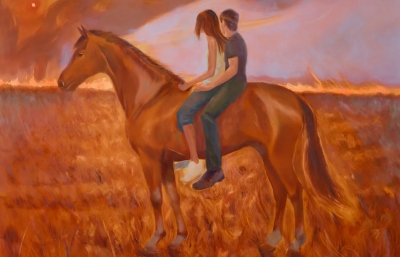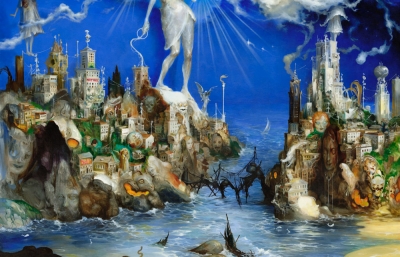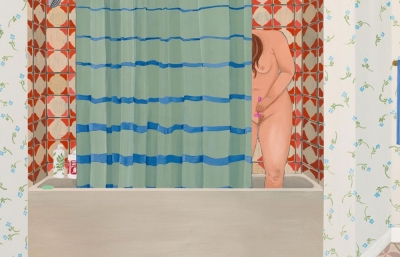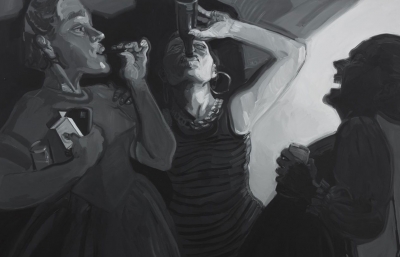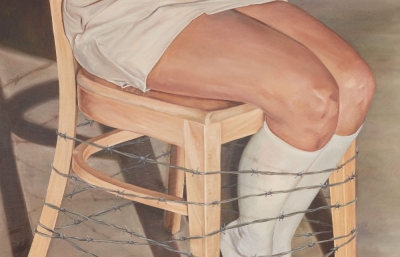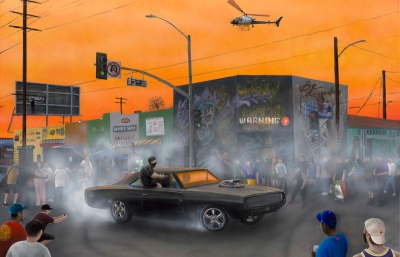Slides that glisten in sunlight, shadowy spiral staircases and curious cubes all dot the landscape in Mehdi Ghadyanloo’s new works, interiors and exteriors to explore and ponder. From gigantic trompe-l'œil-style murals in central Tehran and over 100 murals across the globe in the USA, the UK, Russia, and his native Iran, the artist has now transformed into a successful studio artist, currently enjoying a great run with a solo show at Almine Rech in Paris and also participating in The Future, sixth in a series of exhibitions presented by Gagosian and Jeffrey Deitch during Art Basel Miami Beach.
Concentrating on themes of migration and the environment, and the ways they affect the human condition, Ghadyanloo re-examines the issues within the realm of surrealism and minimalism. Fascinated with the depiction of perspective and creation of space on blank surfaces, he has been creating everything from imaginary cityscapes and landscapes, to poignant architectural paradoxes and minimalistic visual metaphors. Recent series in the past few years feature closed, almost sealed spaces, with the recurring motifs of playgrounds, geometrical cubes, staircases, and clean architectural elements. Focused on the ways outside light interacts with the indoor elements of these imaginary enclosures, he has developed a meticulous technique of meticulously rendering what I can best describe as ultra-real imagery. Minimal in basic construction but rich with the subtle tonal changes and light play, these images are a visual distillation of many emotions conveyed through the work. While almost surgically immaculate, they poetically encapsulate the complex conditions and intimate concerns of someone from a country with a turbulent past, a father, and an artist working in the age of technology and during the time of a global pandemic.
We got in touch with Ghadyanloo to get a better understanding of the the sources of inspiration that informed these paintings and drawings.
Sasha Bogojev: Whether on walls or in paintings, your work always indicates a fascination with perspective and space. How did you develop such an interest, and specifically, what do cubes symbolize for you?
Mehdi Ghadyanloo: I think it mainly comes from my life experience as a child growing up in Iran, a totally isolated country from the rest of the world because of politics, both imposed from inside and outside. Or, the experience of having my father on the front line of the Iran and Iraq war when I was six-seven years old. Also, the early confrontation with the concept of the borders, the walls, being surrounded or being in shelters as a child while being bombarded. I think it's that kind of uncertainty that enters into your subconsciousness as a child.
What other artistic influences inform your work?
Later in life I got to know Persian traditional paintings that had a kind of abstracted perspective that plays with the surfaces and angles without using the shading. This gave a special feeling to the space and all the stories of these illustrated poems from decades ago that were taking place in those spaces. I enjoyed how walls and partitions can give the opportunity to enrich the atmosphere with multiple stories at the same time. Then, later on, I fell in love with Georgio De Chirico's metaphysical paintings and the unique way of painting walls and shades and perspectives, and after that I discovered Magritte. Finally, I found that the concept of walls and barriers, light and hope is not something local, considering what is happening in the contemporary world.
Are there contemporary works that inform this series?
The masterful way of using color in Gerhard Richter's early paintings, the cubes of Donald Judd, Tadao Ando's work, M.C. Escher's way of playing with the eyes, and many more. I am grateful that I am living in a period when I can unconsciously mix hundreds of amazing authors and artists and then refine them through my heart and my life experience, transforming it all to the language of an image that can bridge to people immediately. 
What triggered the focus on playgrounds and slides, in particular, and how do those compare with the ladders, stairs, and holes that presented in earlier work?
I found that painting playgrounds can freshen up viewers' minds and distract them from being surrounded with negativity that showers us, thanks to the Internet!
Also as a father of 2, when I take them to the playgrounds when we travel (of course, in the pre-Covid period), no matter where the playground is located, in America, Germany, or Iran, they immediately and without needing to know words or names of the elements, just start enjoying it. I found it a very inspiring way to communicate. And now, while the world is in a big lockdown, these playscapes inside the boxes have extra layers for me. The way that light shines down on these slides, reflects from one slide to another and to the wall, I see, within them, the beauty of the great Iranian poet Rumi. I find his poems very inspiring since he celebrated life and saw the life journey full of light and love. I see some of my slides as they are dancing and twirling just like a Sufi celebrates life with their special dance called Sama but in the form of a twirling statue of a spiral slide.
And you specifically strip these images of human presence.
I think when I worship a beautiful shape in my painting, it’s important to make it as sophisticated as possible just like Georgio Morandi was painting the bottles. You feel this bottle is not just a bottle, but holds stories from thousands of years, and they talk in a way that you must listen in silence to be able to hear them.
The overall imagery is very minimal with negative space and shadow, contributing a big part of the image. How difficult was it to reduce imagery to that level, especially when comparing it with more elaborate previous compositions?
I think it really depends on the situation of my life and my mood. Sometimes I go more minimal and I think this depends on how messy my life is at that moment so I can take refuge in the painting. You know, I was working on a farm as a laborer from the ages of 7 and 8 to the graduation in painting at Tehran University, and one of my obsessions was to watch carefully how light changes every moment. Just like an impressionist painter, when the sun was going down I could see the horizon line with the empty sky and I simply enjoyed that moment for many years in silence. Even before age 18 when I realized how much I loved art, In a naive, meditative way I spent years watching how beautiful the sky is and how this big, blank, blue canvas, despite having nothing in it as negative space, is beautiful.
The way you render these is so meticulous, so precise. Why did you choose this almost illustrative direction, and how difficult was it to achieve such a level of excellence?
My mother is a nomad, from the Shahsavan tribe and they settle down at the age of 8. I was used to seeing beautiful Persian carpets that my mom was weaving, knot by knot, singing and dealing with the difficulties of life, she with 5 children in a village very far from the city. She ignored the fact that we lived in difficulties and enjoyed life by concentrating on what oe is most responsible for. After months, you could see that beauty coming out and the floral designs of beautiful Persian carpets growing amazingly. I remember once while she was weaving a big carpet,in the middle of the carpet, she ran out of threads for the background color, so found a very similar color. We all commented how it looked a little different and she said that is the beauty of the handwoven carpet. The same goes for the brush strokes when it comes to the imperfection of depicting something. Maybe I am just continuing this tradition in a contemporary way.
Speaking of colors, your palette is fairly minimal, which adds to a subdued ambiance in the work. What atmosphere do you want to convey with such choices?
To create the exact atmosphere that I plan to create, all the colors are at the service of the final picture that I have in my mind, as well as the feeling and the smell of the atmosphere.
Does it feel like a milestone to present this body of work with Almine Rech in Paris, and do you have any other important presentations or goals coming up?
I’m so excited about my exhibition at Almine Rech! I'm also having my work in a curated group show The Future with Gagosian and Jeffrey Deitch Gallery and a presentation at Art021 in Shanghai with Dastan's Basement gallery. I think, like every other painter, I’m just creating new work and hating my former works, and that’s kind of my engine so I keep working on my upcoming series.
Mehdi Ghadyanloo's show at Almine Rech in Paris is on view through December 12, 2020.

